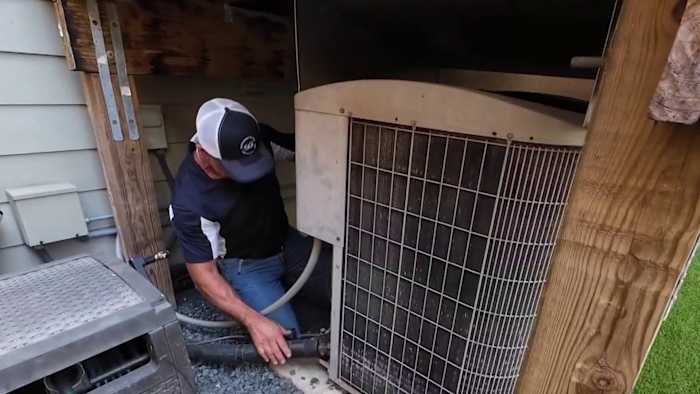HOUSTON, Texas – Some air conditioning repair companies are telling homeowners they must replace their entire HVAC systems due to new refrigerant regulations, but industry experts say that’s not the case.
KPRC’s Amy Davis is addressing this issue after questions from 2 Helps You.
While federal regulations now require new HVAC systems manufactured after January 1, 2025, to use the latest refrigerant R-454B, experts say existing systems can still be repaired and maintained using alternative solutions.
“They’re not being told the truth,” says Blair Bodensteiner, owner of Bodensteiner Services, referring to customers who are told replacement is their only option. His company has been in the AC business for more than 60 years.
The issue came to light after multiple homeowners reported being told their older units couldn’t be repaired due to discontinued refrigerants.
One homeowner, Candice Hunter, was quoted $14,551 for a complete system replacement after being told her existing unit couldn’t be serviced because the refrigerant was no longer available.
Understanding refrigerant changes
The HVAC industry has gone through several refrigerant transitions:
-
Pre-2010 systems used R-22
-
2010-2024 systems typically used R-410
-
New systems from 2025 must use R-454B
Despite these changes, Bodensteiner emphasizes that older systems remain serviceable.
“You can fix any unit. We can fix R-22 units,” he states, even though R-22 is “two freons behind” current standards.
What consumers should know
Experts recommend homeowners consider several factors when faced with AC repairs:
-
Get a second opinion if told your system can’t be repaired due to refrigerant availability
-
Consider the age of your system when weighing repair versus replacement
-
Compare repair costs to replacement costs – if repair costs exceed 20% of a new system’s price, replacement might be more economical
-
Factor in warranties – new systems typically come with 10-year warranties
Making an informed decision
Bodensteiner emphasizes that reputable companies should present all available options to customers. While repairing a single component might be less expensive initially, investing 20% more could secure a new system with modern efficiency standards and a comprehensive warranty.
However, the decision between repair and replacement should remain with the homeowner, based on their specific circumstances and budget constraints.
MORE: New EPA HVAC standards
Do you have a question or topic you want the KPRC team to dig into? Check out the ‘2 Helps You’ section for FAQ’s and contact information.
Copyright 2025 by KPRC Click2Houston – All rights reserved.











